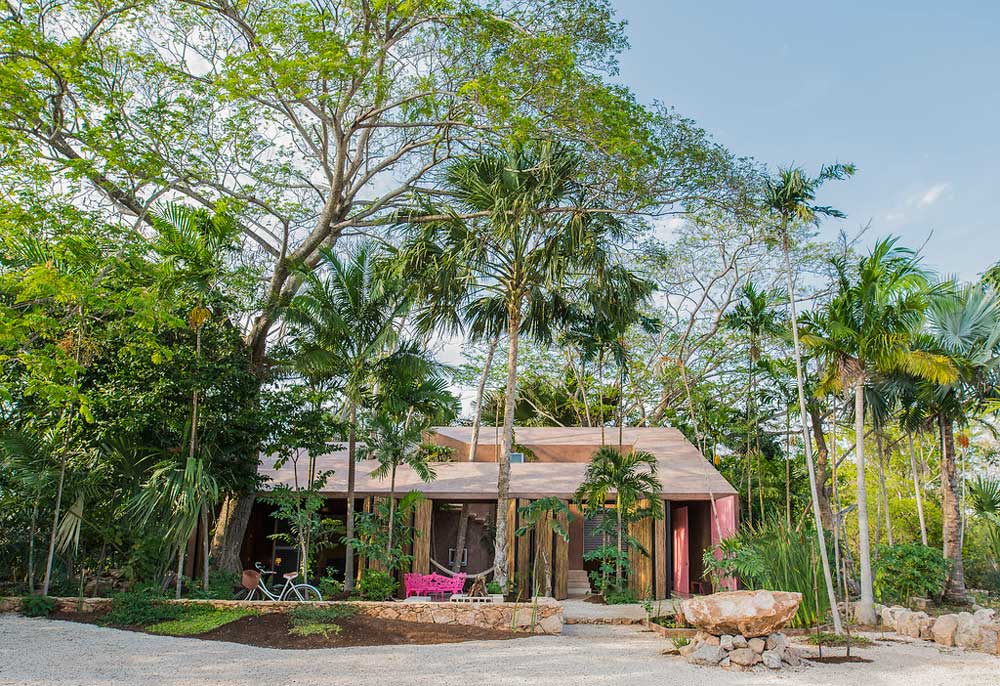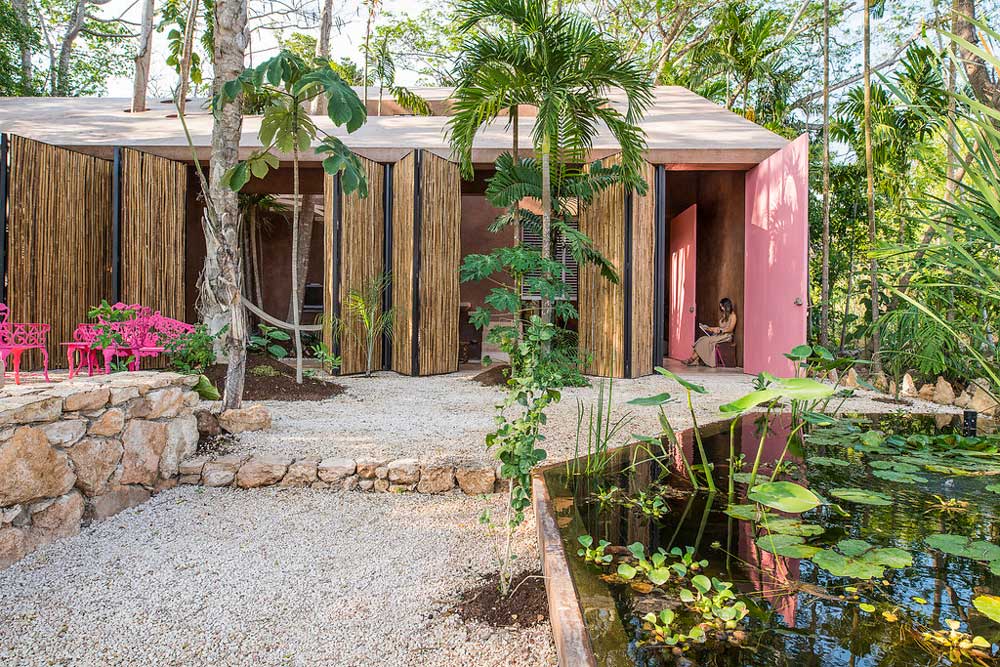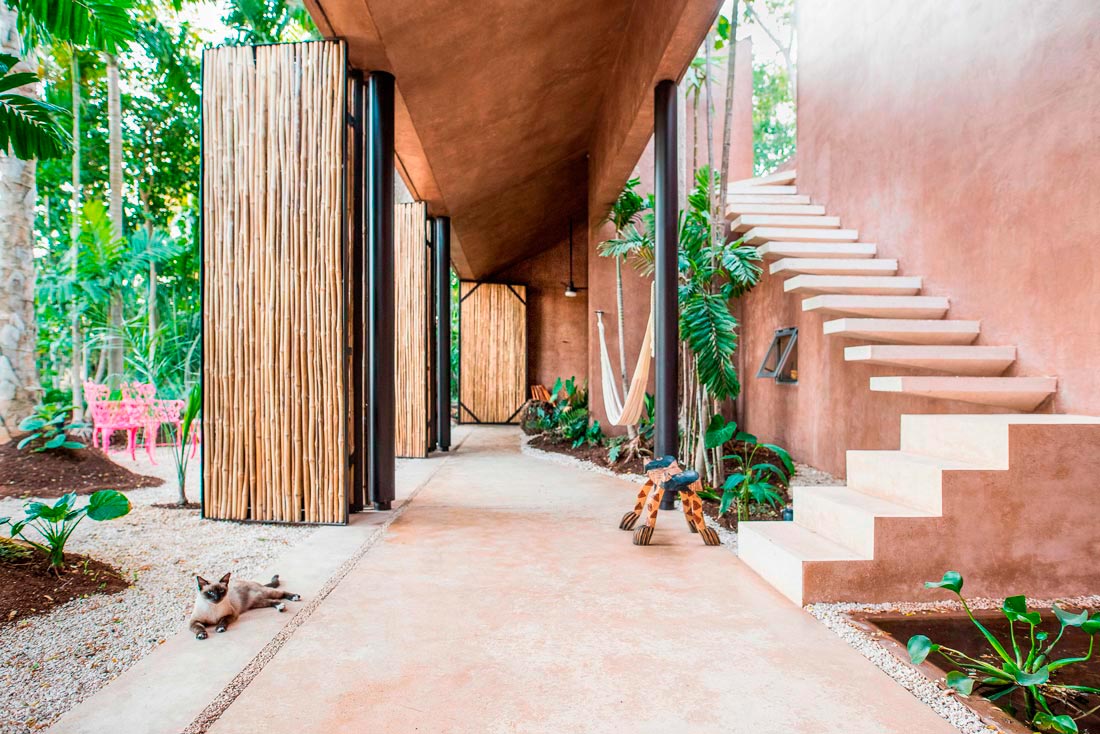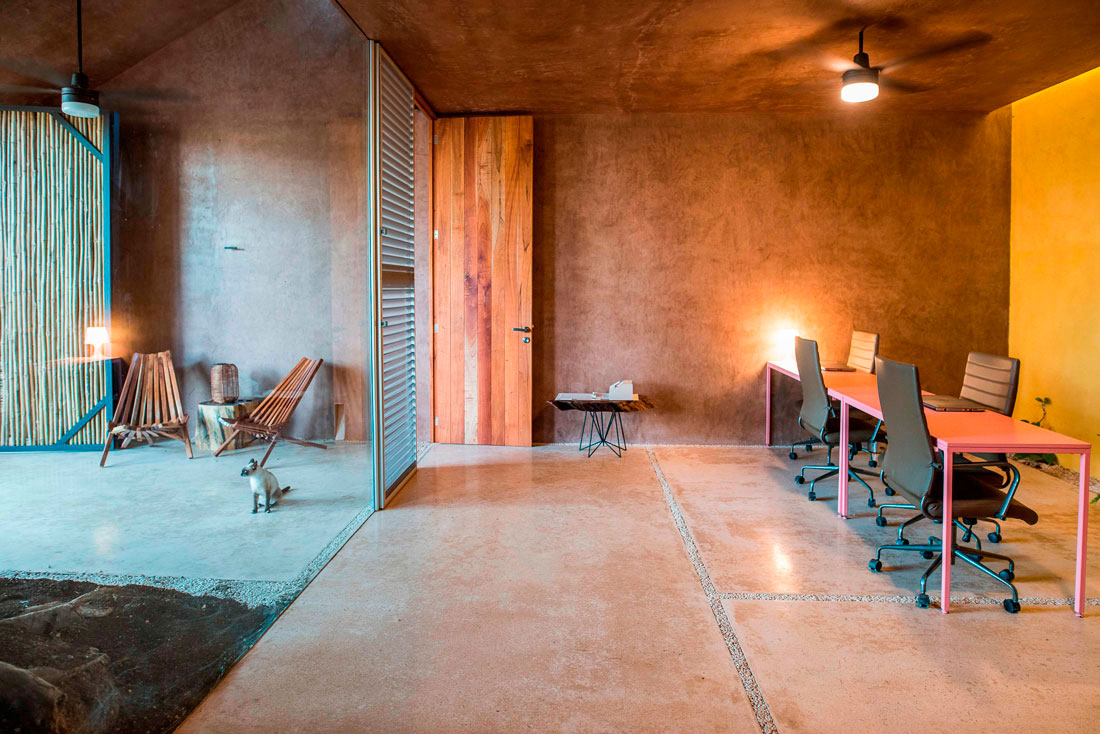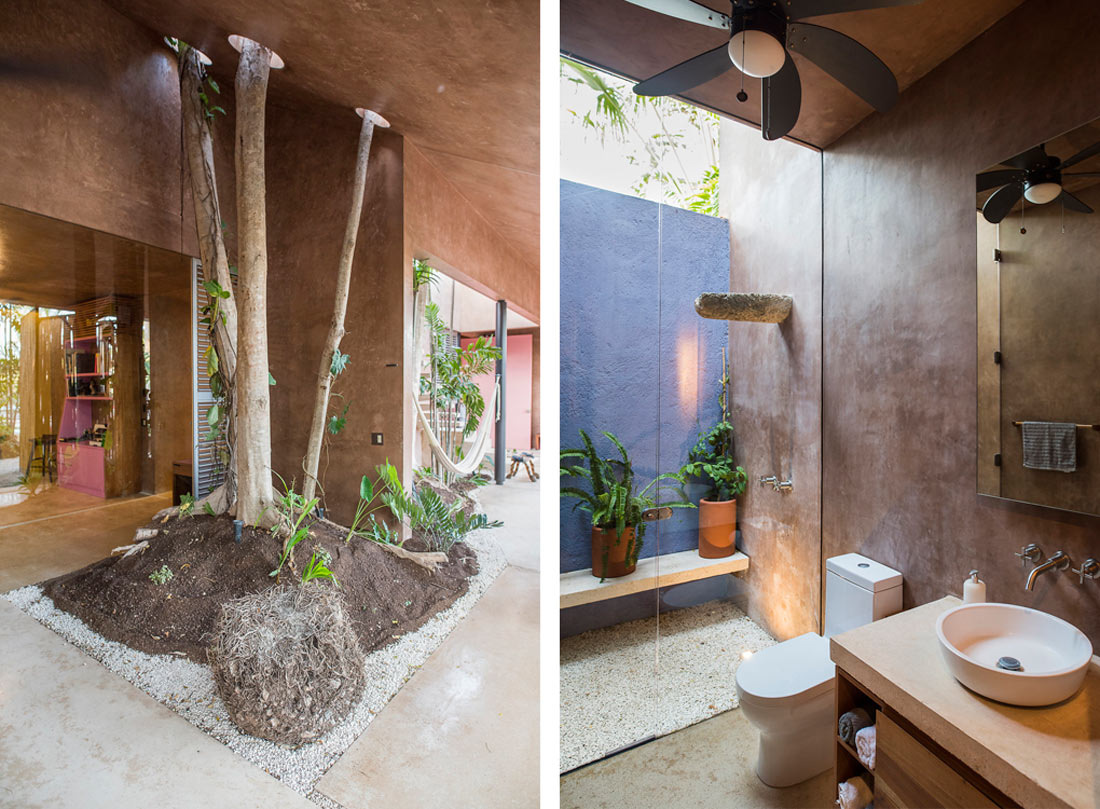Portico Palmeto is a multifunctional building that rises within what was the Palmetum (collection of palm trees) of iconic “Vivero Cholul”, a green lung of 2.5 hectares and several years old, located in Cholul´s heart, this being a Mayan-colonial origin community belonging to the municipality of Merida, southeast of Mexico.
The main objective was to develop a way of living in contact with a natural and social consolidated environment, as well as becoming a functional, versatile and inspiring building for the activities that would be developed inside.
The main activity taking place in the complex is that of an architecture studio. However, the spaces were designed away from a stereotyped traditional work space and focused on making the experience of working in it more welcoming and domestic, due to the design awareness of being a place where people spend much of their day time. For the visitors, the objective was to establish a sensorial connection with the architectural-constructive values promoted by the studio. Socio-cultural activities are carried out as a secondary activity.
The program consists of a permeable multifunctional esplanade, a “garden/pedestrian path” as part of the master plan; a portico with terraces and chill-out areas that also gives access to public and private areas; a “living room/meeting room”; a kitchenette; a full bathroom; a storage room; a work area; a central patio and an open roof terrace with two half bathrooms and a technical room.
The construction is located at the back of the plot due to functional considerations and the requirements set by the master plan to which it belongs, but maintains its visibility from the street as a neighbourhood security strategy. Its form was defined from an existing tree survey, as well as from the passive systems it implements (zenithal openings for hot air evacuation, orientation based on sunlighting, cross ventilation, high ceilings, etc.). The portico has a series of deployable bamboo panels produced in the area which control the insolation, the level of privacy and the security of the building against vandalism and hurricanes.
The construction system is the most common in the region, based on blocks, joists and cement slabs. The roof was cast on site with waterproof concrete and is thermally insulated with polystyrene panels. Sanitary facilities separate grey and black waters, which are treated by means of a grease trap and a biodigester, respectively. Lighting is LED and the building services implement inverter technology.
In terms of materiality, the architectural finishes are apparent to reduce maintenance. The floors are made of white concrete (with Eco-CreteTM joints to release moisture from the floor), as well as the pre-cast plates on site with which the fixed furniture was assembled. The walls and ceilings have burnished stucco that was pigmented with the earth tone of the site. The carpentry used hard wood resistant to termites. Windows were made with natural aluminium and tempered glass. All interior spaces have at hand mosquito nets.
The colours are found in the access thresholds to public areas and in furniture pieces. These were chosen from the site’s popular architecture, as well as by their ability to dialogue with the tones of pre-existing vegetation, which was reinforced with endemic species that attract wild birds, aromatic species and species of human consumption present in the traditional “Mayan Solar”. Likewise, aquatic gardens that function as mosquito controllers and fauna attractants were implemented. These considerations add to the range of intangible sensations that can be perceived in the building.
Its aspiration is to be a syncretic building capable of abstracting the qualities of a regional architectural heritage that ranges from the coherence of the Mayan vernacular architecture, the sobriety and mysticism of the Franciscan convents and the functionality of the Yucatan haciendas, among others, to reconcile them with the characteristics of the historical moment in which it is built.
